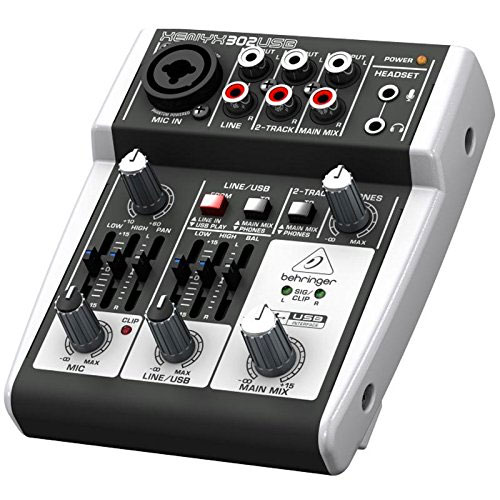
If you don’t want to hold it in your hand (which is not recommended), you’ll need a stand or boom. It offers a 75Hz – 18kHz frequency response, has an internal pop filter, and comes with a stand mount adaptor. The Rode Procaster is an excellent near studio-grade alternative to some of the more “pro” level mics below. If you want something that you will use for both studio and stage, the SM58 could be a great choice. This microphone is made and tuned for vocals. The ‘S’ version includes an on/off switch. The Shure SM58 is a cardioid dynamic mic that is commonly used for live performances.
#Xlr to usb converters for mac podcasting professional
This is a hugely popular mic and many professional sound engineers recommend it.Ĭheck Current Price On Amazon Shure SM58S All of that makes the AT2035 an easy choice while still staying under $150. There is also the AT2035 that runs about $50 more, but it comes with a shock mount and includes a switchable high-pass filter, 10dB pad, a higher SPL and more dynamic range. It is a cardioid condenser microphone, ideal for solo recordings. I’ve recommended the USB+ version of the AT2020 in other posts, this is the XLR version. Audio-Technica even includes both a USB and an XLR cable. The dual USB / XLR outputs can be used at the same time, allowing you to get a backup recording. It is an excellent budget-friendly dynamic cardioid microphone that gets a lot of praise.

We’ve mentioned the ATR2100x-USB a few times here on Podcast Insights. Best XLR Microphones For Voice Recording Audio-Technica ATR2100x You’ll want to consider the cost of all of these when choosing which mic to get. We have various recommendations for XLR mic sets in the podcast starter kit if you just want to get everything together, but we’ll also suggest these options for each mic in the “pair with” section. Usually, the company that makes the mic will also offer a compatible shock mount. Other common accessories are mic booms (also check out the best tabletop stands) and shock mounts. For dynamic mics or ribbon mics, I highly recommend the Cloudlifter CL-1 or CL-2 to give the signal a +25dB boost, just remember to get an extra XLR cable. Typically this is accomplished with a DAC (digital audio converter) like a USB interface or mixer. When choosing an XLR microphone, you will also need a way to get the audio onto your computer for editing. The XLR microphones we recommend range from under $70 to $500 (with one exception – check it out at the end of the post).

They require external or “phantom” power, which most decent digital audio interfaces have, but it’s something to be aware of. Live performers commonly use dynamic mics so they don’t pick up the other instruments as well.Ĭondenser microphones are more sensitive and precise, making them a great choice when recording solo in a quiet environment. You will usually need to be very close to the mic as well.


The mics are listed in ascending order by price (they go from low to high). So you want a (new) professional-level XLR microphone to record yourself speaking or singing? You’ll need to consider 2 main things: dynamic or condenser (I’ll explain which is better for your situation in a second) and what your budget looks like.


 0 kommentar(er)
0 kommentar(er)
